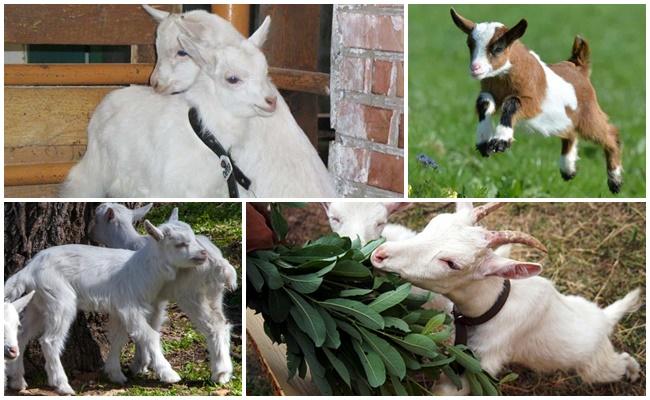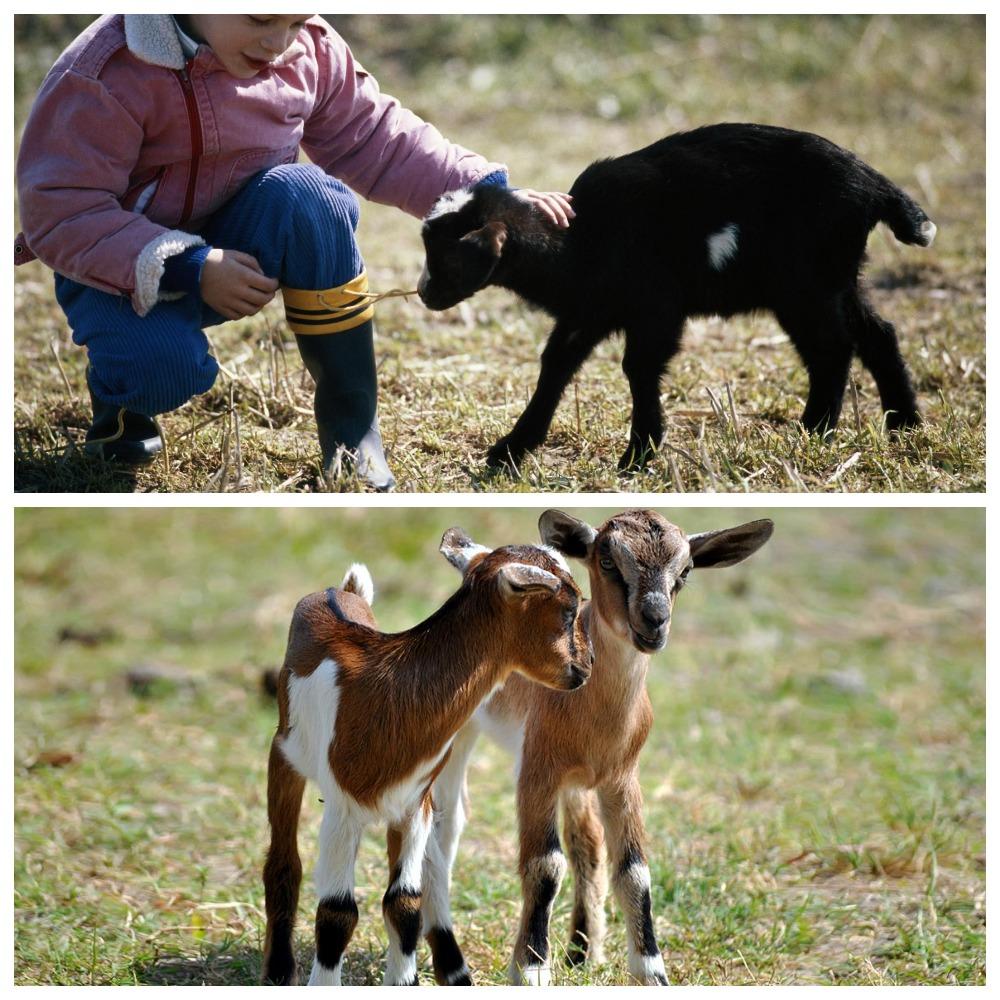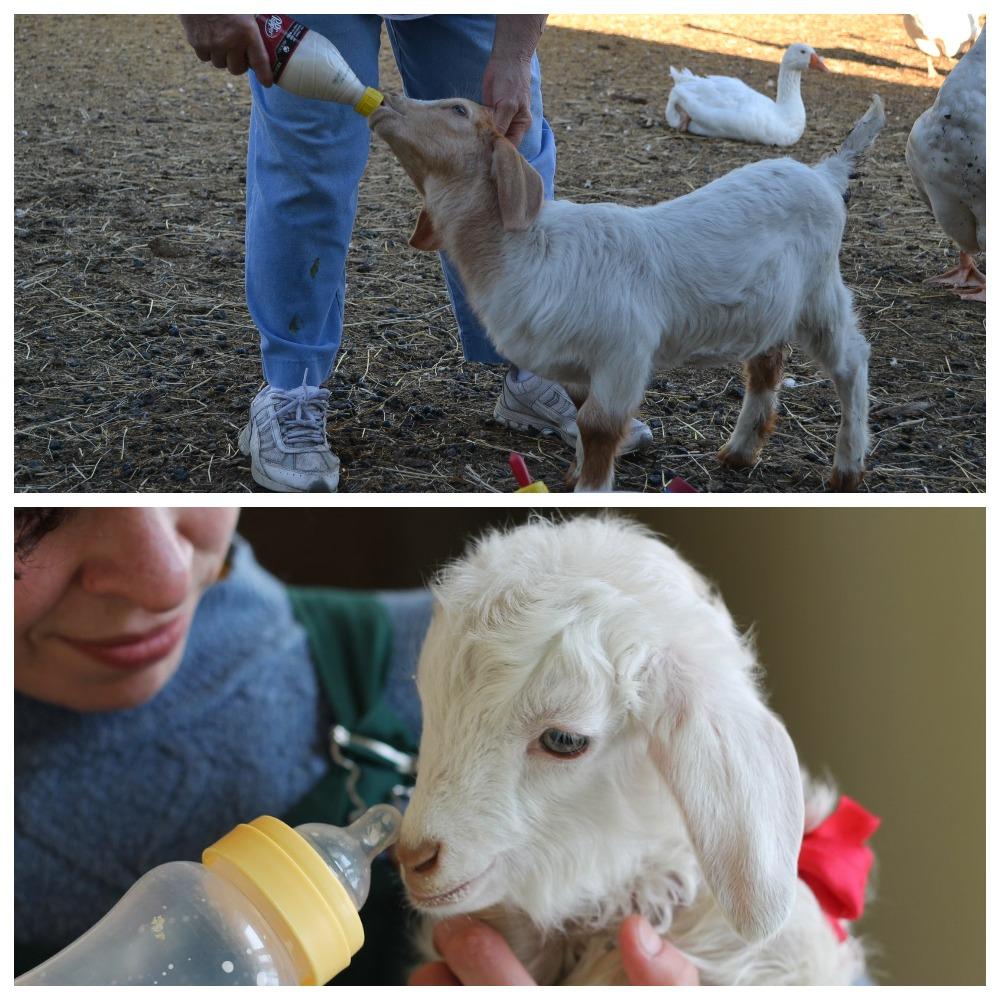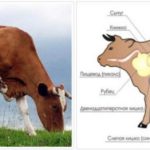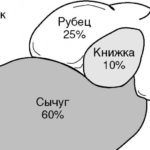When a kid has a bloated belly, many people don’t understand what to do. It must be remembered that the cause of the disease is a huge amount of gases that do not escape. The animal needs help with gas removal. Massaging the abdomen and pulling the tongue out of the mouth helps induce burping. If the cause of bloating is a blockage of the esophagus, you need to insert a hose lubricated with Vaseline and push a hard object through.
Causes of bloating
Tympany, or bloating, in a kid occurs if the animal eats food that causes fermentation in the rumen and increased gas formation (alfalfa, cabbage, clover, legumes, peas, corn cobs, cereals). However, problems only appear when goats overeat or graze in the rain. Bloating is a result of improper feeding.
Tympany often occurs in a small kid or lamb grazing on a pasture in the morning during dew or immediately after rain. Abdominal bloating can be caused by drinking water after feeding, sucking milk and swallowing large amounts of air. Tympany occurs in kids when they are abruptly transferred from milk feeding to plant food (lush green grass). The disease can be prevented. You just need to prevent your animal from overeating, do not feed it large quantities of legumes and protein-rich plants, and also exclude food with mold and rot.
The disease occurs due to a disorder in the mechanisms of belching and chewing gum. Spasms of the pancreas and esophagus can lead to gas retention. This happens when the rumen is full, that is, due to overeating. Weakening of muscle function can occur due to eating poisonous plants (hemlock, buttercup).Disruption of the belching mechanism is often caused by foreign objects that block the narrow lumen of the esophagus, for example, large pieces of root vegetables, apples, pears. Vegetables and fruits can be given to animals, however, only in crushed form.
Tympany can be primary (accumulation of a large amount of gases in the rumen) or secondary (blockage of the esophagus). There is also foam, which occurs when animals eat plants with saponins that have the ability to increase foam formation (soapwort, violet, adonis, horsetail, licorice, marshmallow), as well as legumes and grains. A healthy kid constantly produces gases in the stomach, but they are expelled when belching or pass into the lower parts of the digestive canal.
Signs and symptoms
Tympany is impossible not to notice. A sick animal's abdomen enlarges, especially on the left side. The disease develops rapidly and is observed immediately (within 60 minutes) after feeding. When tympania occurs, the kid loses appetite, has no chewing movements, and may drool profusely.
At the very beginning, the animal’s stomach hurts due to spasms, then the contraction of the rumen stops. The kid constantly looks at the belly, which is greatly swollen, and hits it with his hoof. The animal constantly bleats. Later, after the scar swells and begins to grow, blue mucous membranes, ears, and open-mouth breathing are observed. The pulse quickens, the extremities of the body become cold. If help is not provided to the kid in time, he may die from suffocation and heart problems.
Diagnostic methods
Scar swelling is determined visually: the abdomen increases in size and becomes tense (this is detected by palpation).A person raising goats must recognize the type of tympania. It is necessary to conduct a thorough examination and find out the cause of the disease. During diagnosis, first aid is provided to the animal at the same time.
A possible cause of bloating is excessive gas formation due to poor nutrition. In this case, tilt the kid’s head up and stretch the tongue forward. After this procedure, gases immediately disappear.
If tympany is caused, for example, by blockage of the esophagus with some object, then you need to palpate this organ and examine the pharynx. The abdomen may swell if the passage for gases is blocked. In this case, tension is noticeable in the area of the hungry pit. During percussion (during tapping), a tympanic (drum) sound is detected (due to increased gas formation).
With the foamy type of tympany, when saliva comes from the goat’s mouth, listen to the stomach. You can hear noises inside, the sounds of popping bubbles. The hungry fossa is palpated: abdominal tension is observed. No contraction of the pancreas. During percussion (tapping), no drumming sound is observed.
To clarify the diagnosis, it is advisable to use a food tube. A rubber hose with a diameter of less than 1 cm is advanced down the esophagus into the scar. During such a study, you may encounter various violations. For example, a hose does not move well due to strong muscle activity. These are spasms of the esophagus, and they caused the lack of belching.
At the entrance to the rumen, the hose may rest against something hard. This means that the esophagus is blocked by a foreign object. When the hose, having passed through the esophagus, reaches the scar, profuse release of gases may occur. In case of foamy tympania, the probe will become clogged with foam.
Treatment and first aid for tympany in a goat
Bloating can lead to the death of the animal. Tympany is treated independently, without waiting for the doctor to arrive. Measures are immediately taken to remove excess gases from the rumen. The kid's tongue is rhythmically extended or its root is pressed. This procedure promotes gas removal and the appearance of belching.
If the cause of bloating is gases in the upper part of the rumen, then it is easy to remove them. You can lift the baby goat by its front legs, placing it on its hind legs. In this position, you need to massage your stomach for several minutes. This procedure will release gases from the rumen.
To stimulate peristalsis, the kid's sides are doused with cold water or driven into the river. Cold stimulates contraction of the rumen and leads to the rapid release of gases. You can massage the goat's left side (for 5 minutes) and make it run. It is advisable to repeat this procedure several times.
Increased gas formation can be dealt with using a thin hose. It is inserted into the esophagus and advanced to the scar. Gases are mainly removed through the probe. Belching can be caused by sticking a stick down the goat's throat, irritating its palate or the base of its tongue. When foam, gases, and feed masses come out of the mouth, the rumen is washed, that is, the kid is given two liters of water to drink, adding a little salt or soda.
A decoction of herbs is poured into the animals' mouths to stimulate intestinal motility (wormwood, flax, yarrow, chamomile, dill, valerian root, buckthorn bark). Sunflower or castor oil accelerates the evacuation of gases. As a treatment, animals are given adsorbents (210 ml of milk, water with 12-20 tablets of activated carbon). Fermentation is stopped with lactic acid. To stimulate the motor activity of the stomach, “ASD2” is given.
The pharmacy sells a special remedy for tympany - “Tympanol”. It is advisable to buy this drug in advance. "Timpanol" is diluted with water and injected into the rumen. This product reduces gas formation and increases the rate of gas release. To destroy the foam, you can stock up on a drug such as Sikaden.
When the esophagus is blocked, a rubber probe is also used. A regular hose is lubricated with Vaseline and carefully inserted into the scar. It is used to push solid food masses inside.
Important! In emergency cases, a puncture or surgical opening of the scar is performed. This procedure can only be performed by a veterinarian. The puncture is made without anesthesia in the most swollen part of the abdomen (in the center of the left hungry fossa).
At the injection site, the hair is cut off and the skin is treated with alcohol or iodine. The puncture is made with a trocar or a thick needle. The instrument pierces the skin and abdominal wall, slowly releasing gases from the scar.
How to avoid problems?
Tympany is a disease that occurs when animals are fed improperly, more often due to overeating. The goats are given only high-quality food, not wet, without mold or rot. Goats are fed 3-4 times a day, in small portions. It is forbidden to take animals out to pasture after rain and frost.
In summer, it is advisable for goats to graze on forbs; the diet should contain equal amounts of legumes and cereal grasses. To prevent blockage of the esophagus, it is recommended to give animals only finely chopped vegetables. It is necessary to ensure that goats do not eat rags, apples, or foreign objects.

